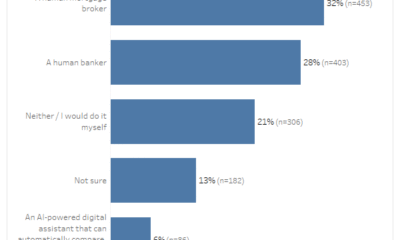AI Insights
UH launches systemwide approach to artificial intelligence
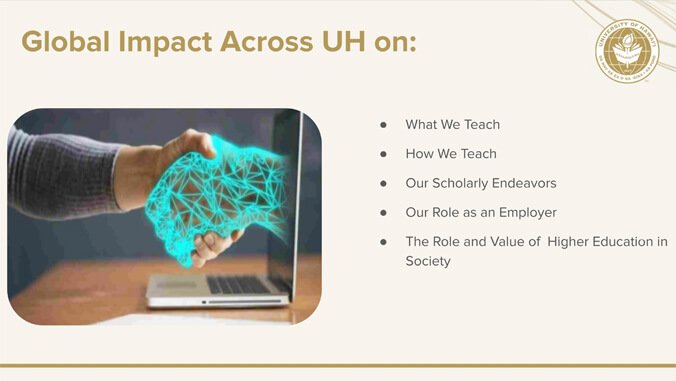
The University of Hawaiʻi is advancing a comprehensive, systemwide approach to becoming a leader in artificial intelligence (AI), with multiple initiatives underway at the system level and across the 10 campuses. President Wendy Hensel outlined the effort in a presentation to the UH Board of Regents on August 21 at UH Maui College, describing AI as a transformative force that will reshape education, research and the workforce in Hawaiʻi and beyond.
“Artificial intelligence has been compared to the invention of electricity,” said Hensel. “It doesn’t touch just one area, it touches all areas and will reform how we go about doing the work of just about everything, not only in the university but across society.”
Hensel acknowledged that some remain skeptical about AI’s reach but cited a familiar adage: people often overestimate the short-term effects of technology and underestimate its long-term impact.
“Most experts believe the scale of change we are seeing today will be more impactful than the industrial revolution,” she told regents. “The university should be a leader in moving Hawaiʻi through this moment.”
Imminent change and opportunity
The president cited predictions from top financial, business and tech firms to underscore the urgency: as many as 300 million jobs worldwide could be affected by generative AI, with 80% of the U.S. workforce expected to see at least 10% of their tasks impacted. It is also estimated that AI could add up to $4.4 trillion in value to the global economy, creating new opportunities and entire industries.
“Every single sector, from healthcare to education to government, is already being reshaped,” Hensel said. “This is not just about computer science. It touches agriculture, trades, finance and the careers that define Hawaiʻi’s workforce.”
AI across teaching, research and operations
Hensel said that UH is approaching AI on multiple fronts:
- What we teach: ensuring every student, regardless of discipline, has the AI skills employers demand.
- How we teach: incorporating tools such as AI-powered virtual teaching assistants and personalized learning content.
- Research: accelerating discovery with new methods for processing vast datasets and building complex models.
- Operations: using AI to improve efficiency across university systems and services.
Hensel emphasized that excellent AI-related work is already underway across UH’s 10 campuses, and a goal of the new initiative is for the system to harness those efforts, ensuring they are integrated, coordinated and able to benefit from scale.
“This is about preparing every learner, in every discipline, to thrive in an AI-driven world,” said Hensel. “Higher education is uniquely positioned to lead through this change, not only by teaching new skills, but by grounding innovation in ethics, cultural values and a commitment to equity.”
Building infrastructure and community partnerships
To guide this work, UH has created an AI Planning Group and appointed its first Chief Academic Technology Innovation Officer, informally dubbed the university’s “AI czar.” UH is pursuing partnerships with companies such as Google, Microsoft and IBM to provide professional development, along with other initiatives to connect students and the community.
UH Mānoa launched new academic offerings in fall 2025 including a Graduate Certificate in Applied Computing (AI/Data Science) and a Professional Master’s in Computer Science with an AI/Data Science track. Faculty on all campuses are also embedding AI assignments into existing courses, thanks to a summer incentive program.
“Our job is to lead Hawaiʻi through this transition,” said Hensel. “It is both frightening and exhilarating, but the University of Hawaiʻi is ready to seize the opportunity.”
Hensel said the AI presentation was part of a new effort to brief the Board of Regents at every meeting on proactive strategies as they develop.
AI Insights
Prediction: This Monster Artificial Intelligence (AI) Chip Stock Will Soar in September (Hint: It’s Not Nvidia)
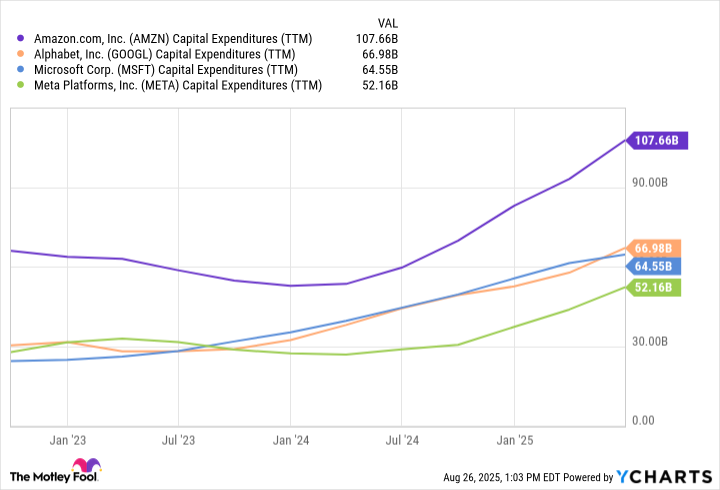
Broadcom is scheduled to report earnings on Sept. 4.
Over the past several weeks, investors have been bombarded with a wave of updates as companies reported earnings results for the second calendar quarter. For technology investors, artificial intelligence (AI) remains the dominant theme fueling the sector higher.
As I write this (mid-day on Aug. 27), all of the “Magnificent Seven” have posted earnings — with the lone exception being Nvidia (NVDA -3.38%), which reports later today. Still, the breadcrumbs left by big tech point to an undeniable trend: Spending on AI infrastructure is accelerating.
While this is undeniably bullish for graphics processing unit (GPU) leaders like Nvidia and Advanced Micro Devices, it also creates a powerful tailwind for systems integration specialist Broadcom (AVGO -3.70%).
With Broadcom slated to report earnings on Sept. 4, I predict the stock is well-positioned to rally.
Let’s explore why I’m optimistic about Broadcom’s upcoming earnings report, and assess whether the stock is a compelling buy at current levels.
Follow big tech’s breadcrumbs
Global hyperscalers such as Amazon, Alphabet, Microsoft, and Meta Platforms have been spending record sums on capital expenditures (capex) over the last few years. While this clearly bodes well for Nvidia and AMD, Broadcom has also been a quiet beneficiary of rising AI infrastructure investment.
Data by YCharts.
One of Broadcom’s key AI growth drivers comes from its application-specific integrated circuits (ASICs) business. These custom silicon solutions allow customers to design chips that are optimized for their unique workloads.
By integrating purpose-built performance with compute power efficiency, Broadcom’s ASICs help hyperscalers lower their total cost of infrastructure relative to relying solely on off-the-shelf accelerators from the likes of Nvidia. This becomes highly desirable as training and inferencing workloads scale and become increasingly complex as more sophisticated AI use cases unfold.
Broadcom’s networking division is also positioned to benefit materially from the ongoing AI infrastructure cycle. As big tech continues to pour hundreds of billions of dollars annually into GPU deployment, Broadcom’s supporting infrastructure becomes an indispensable unsung hero.
The company’s portfolio of high-performance switches, interconnects, and optical components delivers low-latency, high-bandwidth connectivity to keep next-generation accelerators running at full speed. In essence, the company’s networking gear represents a foundational layer of AI data center construction — ensuring scalability and efficiency as workloads expand.
Image source: Getty Images.
Management likes the stock — shouldn’t you?
With a forward price-to-earnings (P/E) multiple of 45, Broadcom certainly isn’t trading at a discount. In fact, its multiple sits near peak levels seen during the AI revolution.
Data by YCharts.
Even so, the company’s board of directors authorized a $10 billion stock buyback program back in April. Share buybacks at elevated valuations can point to a strong signal: Management remains confident in Broadcom’s long-term growth trajectory, underscored by ongoing hyperscaler investment. On a more subtle note, sometimes companies repurchase their own shares when management thinks the stock is undervalued.
These dynamics could suggest that Broadcom is positioned for sustained, robust earnings growth, which could fuel further valuation expansion — even in the face of a premium multiple.
Is Broadcom stock a buy right now?
For the last few years, the AI trade has largely surrounded Nvidia and the cloud hyperscalers. Yet as infrastructure spending accelerates, the scope of the AI opportunity is broadening to other mission-critical enablers such as Broadcom. Custom chips, high-performance networking equipment, and integrated systems are now just as essential as securing GPUs — and Broadcom sits squarely at this intersection.
In my eyes, Broadcom is approaching its own “Nvidia moment” — a potential inflection where the narrative begins to recognize Broadcom as a supporting pillar of AI infrastructure and not simply an ancillary beneficiary of these tailwinds.
Against this backdrop, I predict that Broadcom’s September earnings report will reinforce its strategic importance in the AI landscape — fueling investor enthusiasm and a further rerating of the stock. For these reasons, I see Broadcom as a compelling opportunity to buy and hold over a long-term time horizon.
Adam Spatacco has positions in Alphabet, Amazon, Meta Platforms, Microsoft, and Nvidia. The Motley Fool has positions in and recommends Advanced Micro Devices, Alphabet, Amazon, Meta Platforms, Microsoft, and Nvidia. The Motley Fool recommends Broadcom and recommends the following options: long January 2026 $395 calls on Microsoft and short January 2026 $405 calls on Microsoft. The Motley Fool has a disclosure policy.
AI Insights
AI Model Betting Is the New Fantasy Football
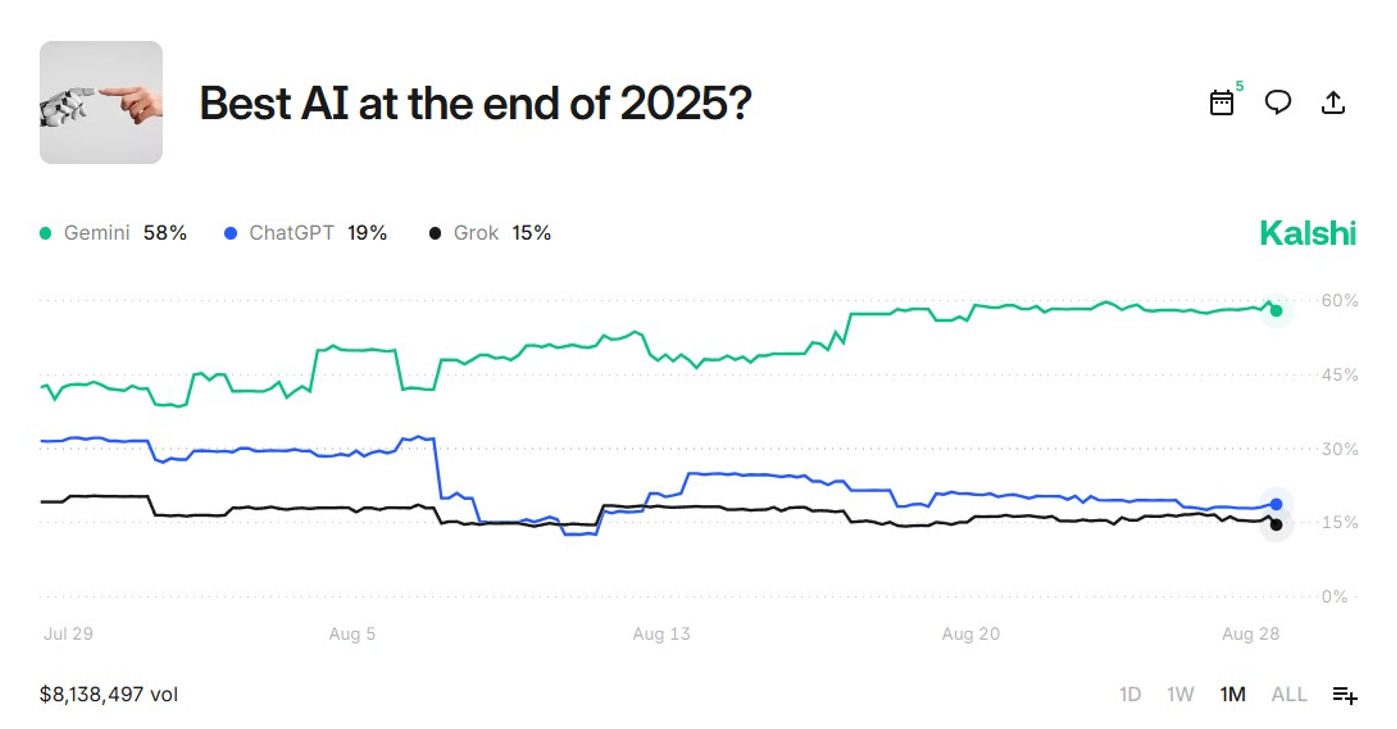
Sports gambling has DraftKings. Political junkies have PredictIt. And now the world’s nerdiest corner — the artificial intelligence (AI) scene — has its own set of bettors, where people wager actual money on whether Google’s Gemini will dunk on OpenAI’s GPT-5 this month.
AI Insights
How Silicon Valley is using religious language to talk about AI
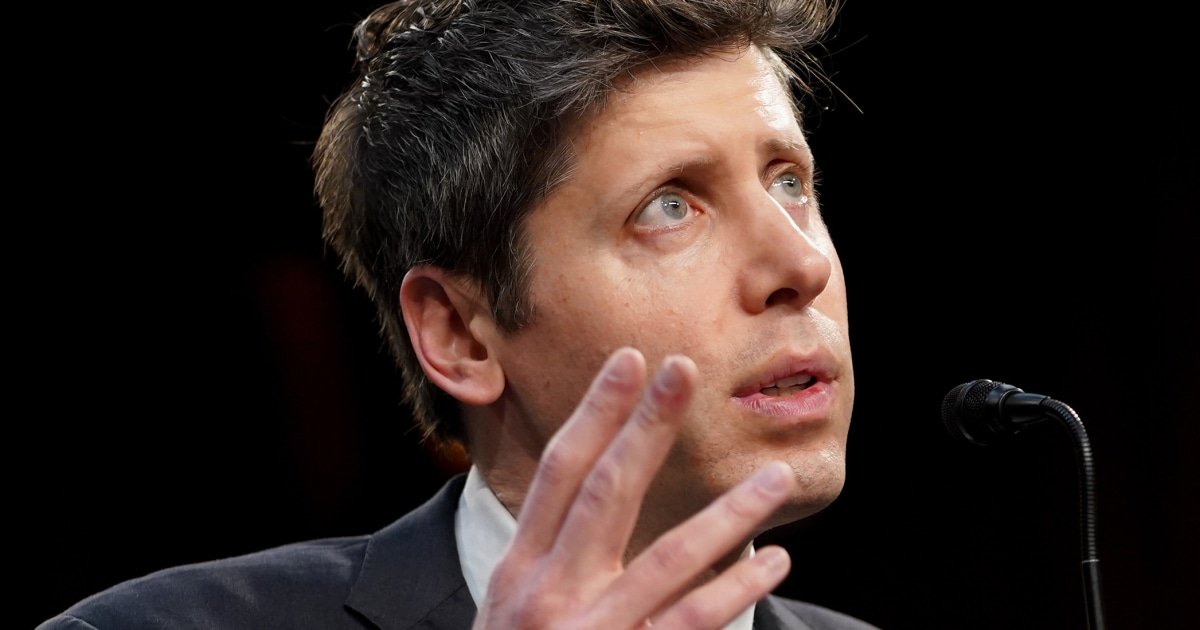
TORONTO — As the rapid, unregulated development of artificial intelligence continues, the language people in Silicon Valley use to describe it is becoming increasingly religious.
From predicting the potential destruction of humanity to a transhumanist apocalypse where people merge with AI, here’s what some of the key players are saying.
___
“I think religion will be in trouble if we create other beings. Once we start creating beings that can think for themselves and do things for themselves, maybe even have bodies if they’re robots, we may start realizing we’re less special than we thought. And the idea that we’re very special and we were made in the image of God, that idea may go out the window.”
— Nobel Prize winner Geoffrey Hinton, often dubbed the “Godfather of AI” for his pioneering work on deep learning and neural networks.
___
“By 2045, which is only 20 years from now, we’ll be a million times more powerful. And we’ll be able to have expertise in every field.”
— author and computer scientist Ray Kurzweil, who believes humans will merge with AI.
___
“There certainly are dimensions of the technology that have become extremely powerful in the last century or two that have an apocalyptic dimension. And perhaps it’s strange not to try to relate it to the biblical tradition.”
— PayPal and Palantir co-founder Peter Thiel speaking to the Hoover Institution at Stanford University.
___
“I feel that the four big AI CEOs in the U.S. are modern-day prophets with four different versions of the Gospel and they’re all telling the same basic story that this is so dangerous and so scary that I have to do it and nobody else.”
— Max Tegmark, a physicist and machine learning researcher at the Massachusetts Institute of Technology.
___
“When people in the tech industry talk about building this one true AI, it’s almost as if they think they’re creating God or something.”
— Meta CEO Mark Zuckerberg on a podcast promoting his company’s own venture into AI.
___
“Everyone (including AI companies!) will need to do their part both to prevent risks and to fully realize the benefits. But it is a world worth fighting for. If all of this really does happen over 5 to 10 years — the defeat of most diseases, the growth in biological and cognitive freedom, the lifting of billions of people out of poverty to share in the new technologies, a renaissance of liberal democracy and human rights — I suspect everyone watching it will be surprised by the effect it has on them.”
— Anthropic CEO Dario Amodei in his essay, “Machines of Loving Grace: How AI Could Transform the World for the Better.”
___
“You and I are living through this once-in-human-history transition where humans go from being the smartest thing on planet Earth to not the smartest thing on planet Earth.”
— OpenAI CEO Sam Altman during an interview for TED Talks.
___
“These really big, scary problems that are complex and challenging to address — it’s so easy to gravitate towards fantastical thinking and wanting a one-size-fits-all global solution. I think it’s the reason that so many people turn to cults and all sorts of really out there beliefs when the future feels scary and uncertain. I think this is not different than that. They just have billions of dollars to actually enact their ideas.”
— Dylan Baker, lead research engineer at the Distributed AI Research Institute.
-
Tools & Platforms3 weeks ago
Building Trust in Military AI Starts with Opening the Black Box – War on the Rocks
-

 Ethics & Policy1 month ago
Ethics & Policy1 month agoSDAIA Supports Saudi Arabia’s Leadership in Shaping Global AI Ethics, Policy, and Research – وكالة الأنباء السعودية
-

 Events & Conferences3 months ago
Events & Conferences3 months agoJourney to 1000 models: Scaling Instagram’s recommendation system
-

 Jobs & Careers2 months ago
Jobs & Careers2 months agoMumbai-based Perplexity Alternative Has 60k+ Users Without Funding
-

 Funding & Business2 months ago
Funding & Business2 months agoKayak and Expedia race to build AI travel agents that turn social posts into itineraries
-

 Education2 months ago
Education2 months agoVEX Robotics launches AI-powered classroom robotics system
-

 Podcasts & Talks2 months ago
Podcasts & Talks2 months agoHappy 4th of July! 🎆 Made with Veo 3 in Gemini
-

 Podcasts & Talks2 months ago
Podcasts & Talks2 months agoOpenAI 🤝 @teamganassi
-

 Mergers & Acquisitions2 months ago
Mergers & Acquisitions2 months agoDonald Trump suggests US government review subsidies to Elon Musk’s companies
-

 Jobs & Careers2 months ago
Jobs & Careers2 months agoAstrophel Aerospace Raises ₹6.84 Crore to Build Reusable Launch Vehicle


















